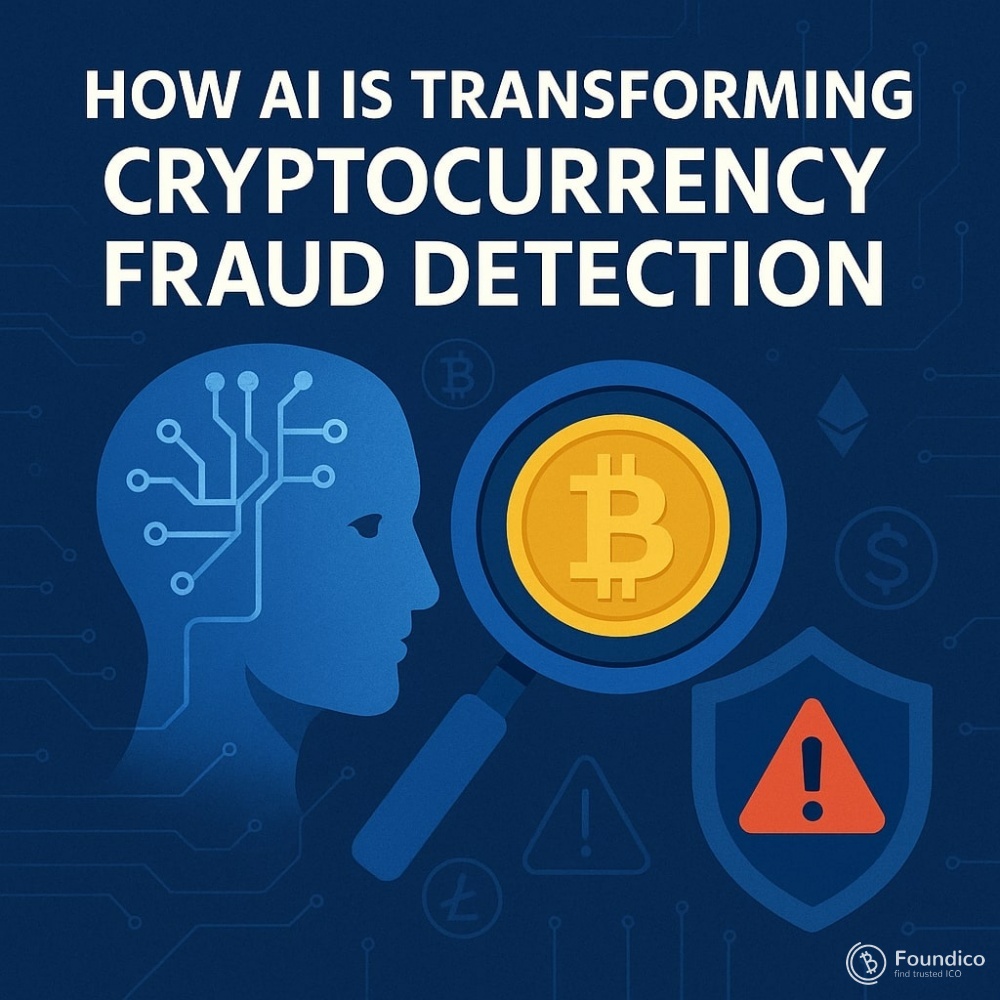How AI Is Transforming Cryptocurrency Fraud Detection

By Dr. Pooyan Ghamari, Swiss Economist and Visionary
The rise of cryptocurrencies has revolutionized finance, promising decentralization, transparency, and borderless transactions. However, this rapid growth has also attracted fraudsters and scammers who exploit the pseudonymous nature of crypto transactions to conduct illicit activities. Traditional fraud detection methods, designed for centralized financial systems, struggle to keep pace with the complexity and speed of blockchain transactions. Enter Artificial Intelligence (AI)—a game-changing technology that is reshaping how cryptocurrency fraud is detected, prevented, and investigated.
The Unique Challenges of Cryptocurrency Fraud
Cryptocurrency systems present several challenges for fraud detection:
-
Pseudonymity and anonymity: While blockchain transactions are transparent and recorded on public ledgers, the identities behind wallet addresses remain largely anonymous.
-
Irreversible transactions: Unlike credit card payments, crypto transactions cannot be reversed, making timely fraud detection critical.
-
High transaction volume: The speed and volume of crypto trades require real-time monitoring and analysis.
-
Evolving fraud tactics: Fraudsters continuously adapt, employing sophisticated techniques such as wash trading, pump-and-dump schemes, phishing, and mixing services to obscure funds.
These factors make conventional rule-based fraud detection insufficient, necessitating more dynamic and intelligent approaches.
How AI Enhances Fraud Detection in Cryptocurrency
Artificial intelligence, powered by machine learning (ML) and deep learning algorithms, offers several advantages in combating crypto fraud:
1. Real-Time Anomaly Detection
AI systems analyze vast amounts of transactional data instantly to detect unusual patterns that may indicate fraudulent activity. For example, a sudden spike in transaction volume from a previously dormant wallet or transfers to known risky addresses can trigger alerts.
2. Behavioral Profiling
Machine learning models build profiles of normal user behavior, learning transaction habits over time. Deviations from these profiles, such as changes in transaction frequency, amounts, or counterparties, help identify potential fraud.
3. Network Analysis
AI leverages graph analytics to map relationships between wallet addresses and clusters of suspicious activity. This network perspective is crucial for uncovering coordinated fraud rings, money laundering, and layered transactions designed to conceal the source of funds.
4. Natural Language Processing (NLP)
Fraud detection extends beyond transaction data. AI-powered NLP tools analyze social media, forums, and messaging channels to detect emerging scams, phishing campaigns, or fraudulent ICOs before they escalate.
5. Adaptive Learning
Unlike static rule sets, AI models continuously learn from new data, adapting to evolving fraud techniques. This agility improves detection accuracy and reduces false positives.
Case Studies: AI in Action
Several companies and platforms are pioneering AI-driven fraud detection in the crypto space:
-
Chainalysis: Using AI-powered blockchain analytics, Chainalysis identifies illicit transactions and helps exchanges comply with regulations.
-
Elliptic: Elliptic’s AI models track risky wallets and provide real-time alerts for suspicious activity.
-
CipherTrace: Employing machine learning to monitor and flag transactions tied to money laundering and terrorist financing.
These tools not only protect users but also enhance trust in the cryptocurrency ecosystem, encouraging wider adoption.
Economic and Regulatory Implications
From an economic perspective, AI-enhanced fraud detection reduces financial losses and protects investor confidence—critical factors for the maturation of crypto markets. Regulators increasingly demand robust anti-money laundering (AML) and know-your-customer (KYC) controls, and AI technologies help exchanges and financial institutions meet these compliance requirements efficiently.
Moreover, AI enables proactive risk management by predicting fraud trends and enabling early intervention.
Challenges and Ethical Considerations
Despite its promise, AI-driven fraud detection faces challenges:
-
Data quality and privacy: Access to comprehensive, high-quality data is essential, but privacy regulations and the decentralized nature of crypto complicate data collection.
-
Algorithmic bias: AI models must be carefully designed to avoid unfairly targeting specific users or groups.
-
False positives: Overzealous detection can disrupt legitimate transactions and frustrate users.
Addressing these issues requires transparency, ongoing oversight, and collaboration between technologists, regulators, and the crypto community.
The Future Landscape
Looking ahead, the integration of AI with blockchain technology will deepen. Innovations such as decentralized AI models and on-chain machine learning could provide even more robust fraud detection while preserving user privacy and control.
As cryptocurrencies become mainstream, AI’s role in safeguarding digital assets will be indispensable. This fusion of technologies heralds a new era of secure, transparent, and trustworthy digital finance.
Artificial intelligence is not just enhancing fraud detection—it is fundamentally transforming how we secure the future of cryptocurrencies. As we navigate this evolving landscape, embracing AI-driven solutions will be key to protecting users and sustaining growth in the decentralized economy.

 Snorter - Snorter Bot ($SNORT) is a Telegram-native, meme-fueled trading terminal for Solana and beyond. Built for speed, stealth, and degen-level execution, Snorter lets you swap, snipe, and copy-trade straight from chat. Powered by the $SNORT token, it's the fastest way to hunt launches, dodge rugs, and flip your way to the top before anyone else even loads the chart.
Snorter - Snorter Bot ($SNORT) is a Telegram-native, meme-fueled trading terminal for Solana and beyond. Built for speed, stealth, and degen-level execution, Snorter lets you swap, snipe, and copy-trade straight from chat. Powered by the $SNORT token, it's the fastest way to hunt launches, dodge rugs, and flip your way to the top before anyone else even loads the chart.